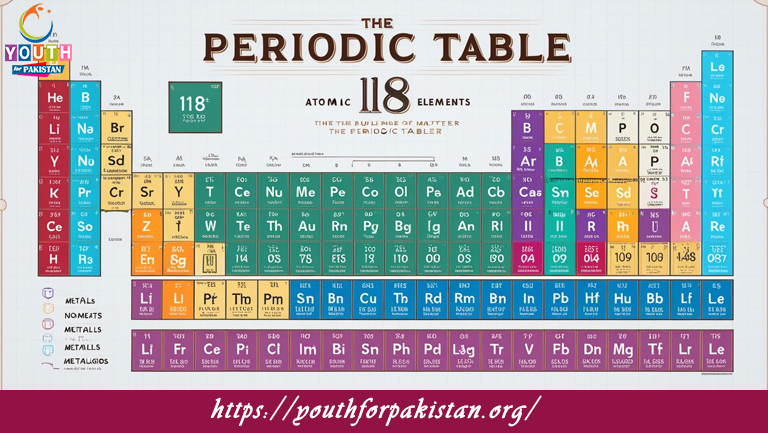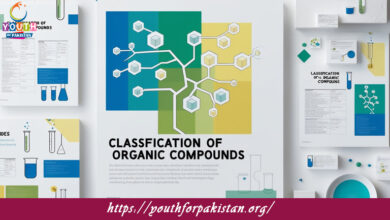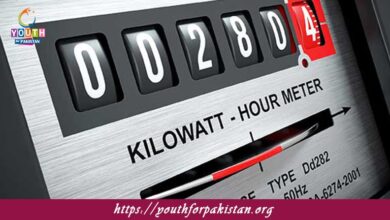Group1 Element Trends In Reactivity MDCAT MCQs with Answers

Welcome to the Group1 Element Trends In Reactivity MDCAT MCQs with Answers. In this post, we have shared Group1 Element Trends In Reactivity Multiple Choice Questions and Answers for PMC MDCAT 2024. Each question in MDCAT Chemistry offers a chance to enhance your knowledge regarding Group1 Element Trends In Reactivity MCQs in this MDCAT Online Test.
The reactivity of Group 1 elements with water:
a) Decreases down the group
b) Increases down the group
c) Remains constant
d) Fluctuates
Which Group 1 element reacts most vigorously with water?
a) Lithium
b) Sodium
c) Potassium
d) Rubidium
The general reaction of Group 1 metals with water produces:
a) Metal hydroxide and hydrogen gas
b) Metal chloride and water
c) Metal sulfate and hydrogen gas
d) Metal oxide and hydrogen gas
The trend in reactivity of Group 1 metals with halogens:
a) Decreases down the group
b) Increases down the group
c) Remains constant
d) Fluctuates
The most reactive Group 1 element towards halogens is:
a) Lithium
b) Sodium
c) Potassium
d) Cesium
The reactivity of Group 1 elements with oxygen:
a) Increases down the group
b) Decreases down the group
c) Remains constant
d) First increases, then decreases
Which Group 1 metal reacts with air to form a peroxide?
a) Lithium
b) Sodium
c) Potassium
d) Rubidium
The solubility of Group 1 hydroxides in water:
a) Increases down the group
b) Decreases down the group
c) Remains constant
d) First increases, then decreases
The Group 1 element that forms a white compound when reacted with chlorine is:
a) Lithium
b) Sodium
c) Potassium
d) Rubidium
The reactivity of Group 1 elements with acids:
a) Increases down the group
b) Decreases down the group
c) Remains constant
d) Fluctuates
The most common product formed when Group 1 elements react with acids is:
a) Metal chloride and hydrogen gas
b) Metal sulfate and hydrogen gas
c) Metal nitrate and hydrogen gas
d) Metal carbonate and hydrogen gas
The Group 1 element that reacts with cold water to produce a colorless solution is:
a) Lithium
b) Sodium
c) Potassium
d) Cesium
The trend in the reactivity of Group 1 elements with sulfur:
a) Increases down the group
b) Decreases down the group
c) Remains constant
d) Fluctuates
The Group 1 element that forms a colored flame when burned in air is:
a) Lithium
b) Sodium
c) Potassium
d) Rubidium
The reactivity of Group 1 elements with alcohols generally:
a) Increases down the group
b) Decreases down the group
c) Remains constant
d) Fluctuates
Which Group 1 element is used in making high-quality glass?
a) Lithium
b) Sodium
c) Potassium
d) Rubidium
The Group 1 element that is most likely to form a salt with iodine is:
a) Lithium
b) Sodium
c) Potassium
d) Cesium
The solubility of Group 1 metal chlorides in water:
a) Increases down the group
b) Decreases down the group
c) Remains constant
d) First increases, then decreases
The Group 1 metal that reacts with water to produce a gas that burns with a lilac flame is:
a) Lithium
b) Sodium
c) Potassium
d) Rubidium
The most reactive Group 1 element with oxygen is:
a) Sodium
b) Potassium
c) Rubidium
d) Cesium
The reaction of Group 1 elements with hydrogen gas:
a) Forms metal hydrides
b) Forms metal oxides
c) Forms metal hydroxides
d) Forms metal sulfides
The reactivity of Group 1 elements with water is:
a) Directly proportional to the atomic number
b) Inversely proportional to the atomic number
c) Independent of the atomic number
d) Unpredictable
The Group 1 metal that forms a peroxide when burned in air is:
a) Lithium
b) Sodium
c) Potassium
d) Cesium
The flame color produced by lithium salts is:
a) Red
b) Yellow
c) Lilac
d) Green
The most reactive Group 1 metal with sulfur is:
a) Lithium
b) Sodium
c) Potassium
d) Cesium
The reaction of Group 1 elements with nitrogen:
a) Forms metal nitrides
b) Forms metal chlorides
c) Forms metal oxides
d) Forms metal hydroxides
The color of the flame produced by sodium compounds is:
a) Red
b) Blue
c) Yellow
d) Green
The Group 1 metal that is the most reactive towards iodine is:
a) Lithium
b) Sodium
c) Potassium
d) Cesium
The solubility of Group 1 metal hydroxides in water:
a) Increases down the group
b) Decreases down the group
c) Remains constant
d) Fluctuates
The trend in the melting point of Group 1 elements:
a) Decreases down the group
b) Increases down the group
c) Remains constant
d) Fluctuates
The Group 1 element that forms a basic solution when dissolved in water is:
a) Lithium
b) Sodium
c) Potassium
d) Cesium
The reaction of Group 1 metals with chlorine gas forms:
a) Metal chlorides
b) Metal oxides
c) Metal hydroxides
d) Metal sulfides
The Group 1 metal with the least reactivity towards water is:
a) Lithium
b) Sodium
c) Potassium
d) Rubidium
The reaction of potassium with water is characterized by:
a) Formation of a mild fizz
b) Formation of a violent fizz
c) Formation of no reaction
d) Formation of a dense white mist
The Group 1 element with the lowest ionization energy is:
a) Sodium
b) Potassium
c) Rubidium
d) Cesium
The solubility of Group 1 metal carbonates in water:
a) Increases down the group
b) Decreases down the group
c) Remains constant
d) Fluctuates
The flame color produced by rubidium compounds is:
a) Red
b) Purple
c) Yellow
d) Green
The most common product of Group 1 metal reactions with oxygen is:
a) Metal oxides
b) Metal peroxides
c) Metal superoxides
d) Metal hydroxides
The Group 1 element with the lowest density is:
a) Sodium
b) Potassium
c) Lithium
d) Cesium
The solubility trend of Group 1 metal halides in water:
a) Increases down the group
b) Decreases down the group
c) Remains constant
d) Fluctuates
If you are interested to enhance your knowledge regarding Physics, Chemistry, Computer, and Biology please click on the link of each category, you will be redirected to dedicated website for each category.




